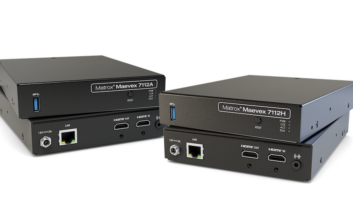Orlando, Fla. — Walmart is testing a wide range of pick-up options for online orders as it continues to integrate its physical and e-commerce operations.
Leveraging its supply chain, Walmart is looking beyond stores to lockers and even freestanding drive-through windows as retrieval points for dot.com purchases.
The effort is anchored by an initiative called “tethering” that connects the online and brick-and-mortar channels to Walmart’s vast distribution network. The objective, Walmart U.S. president/CEO Bill Simon told investors at a conference here this week, is to locate a SKU that was ordered online “and get it to [the customer] in the quickest, most effective way.”
Algorithms would determine the least expensive route, be it shipping direct to a consumer or other location from an e-commerce fulfillment center or regional warehouse, or trucking cross-docked inventory from a SuperCenter to a small-format store.
Tethering also ties small stores’ back-office functions to big stores in order to consolidate labor scheduling, cash and receivables, and other retail operations.
“Tethering is shorthand for fully connected to everything,” Simon said. “It is the digital thinking of physical retail.”
He said the approach was developed by the chain’s United Kingdom operation, and that the first completely tethered U.S. Walmart store will open on May 2.
The company is already shipping orders to lockers in the metro Washington, D.C., market where it has received a “very good” customer response, and has begun implementing drive-through “modules” in Denver that can be attached to stores or set up as “Sonic”-type standalones, he said.
There are no fees or required subscriptions for the pick-up service, and early-stage satisfaction ratings are around 90 percent positive, he noted.
The retailer is also testing several small-store formats, including Neighborhood Markets and college campus stores, but is especially enthused about Walmart Express, which it has tested extensively in eastern North Carolina and considers an ideal match for its drive-through modules. The prototypes, which first began appearing in 2011, are about 15,000 square feet in size and carry a tightly edited but full-line assortment of 10,000 SKUs, compared with the 150,000 square feet and 100,000 SKUs typical of the Supercenters.
Simon said Express stores are “fundamentally different and differentiated from the other formats that would compete in that space because of the breadth of the offering and the connectivity that we have through Walmart.com. We believe we can build [that] into a competitive advantage against the entire spectrum of retail from pure physical to pure digital. That intersection is a space that we believe is very strong for us.”













